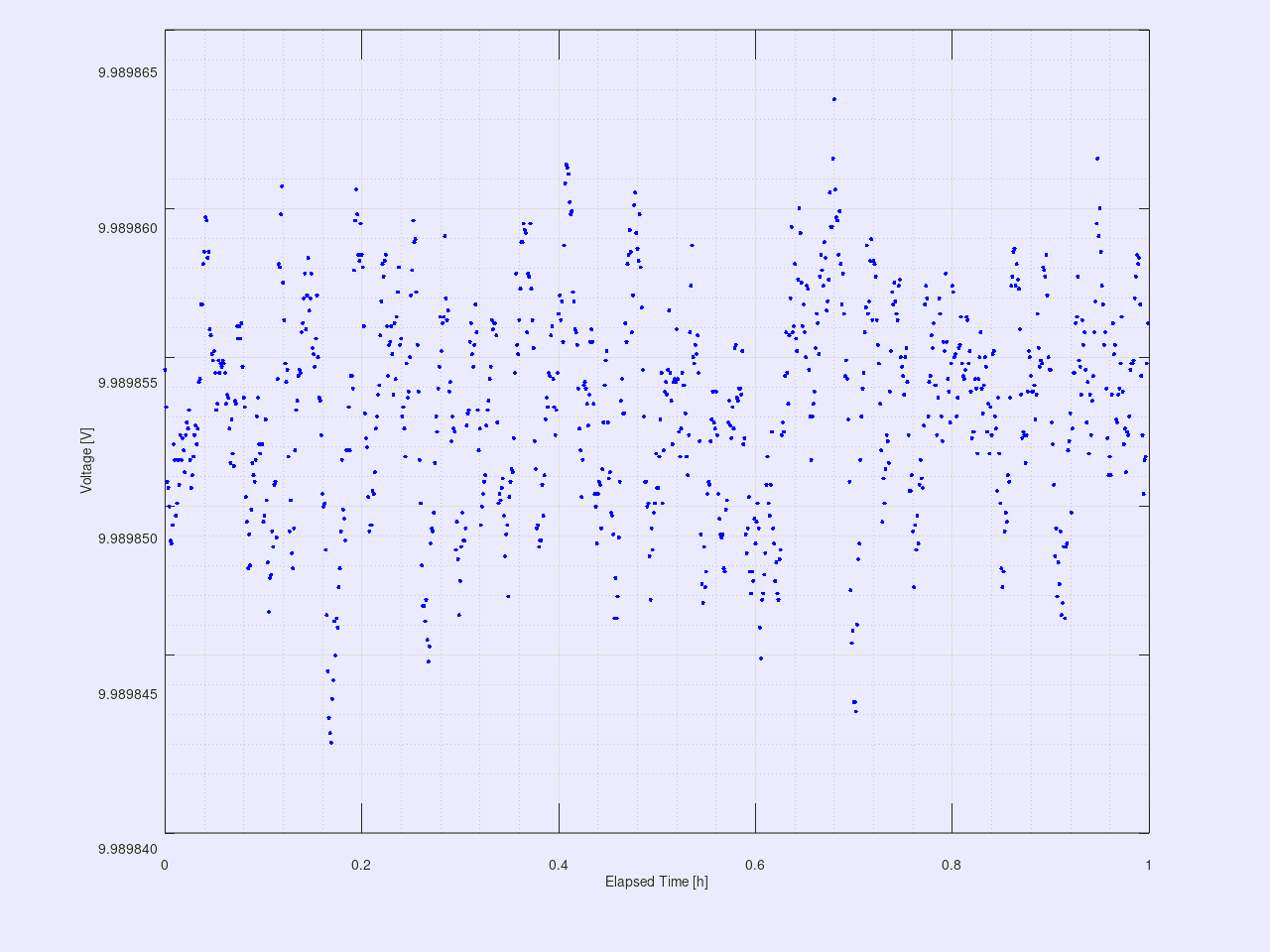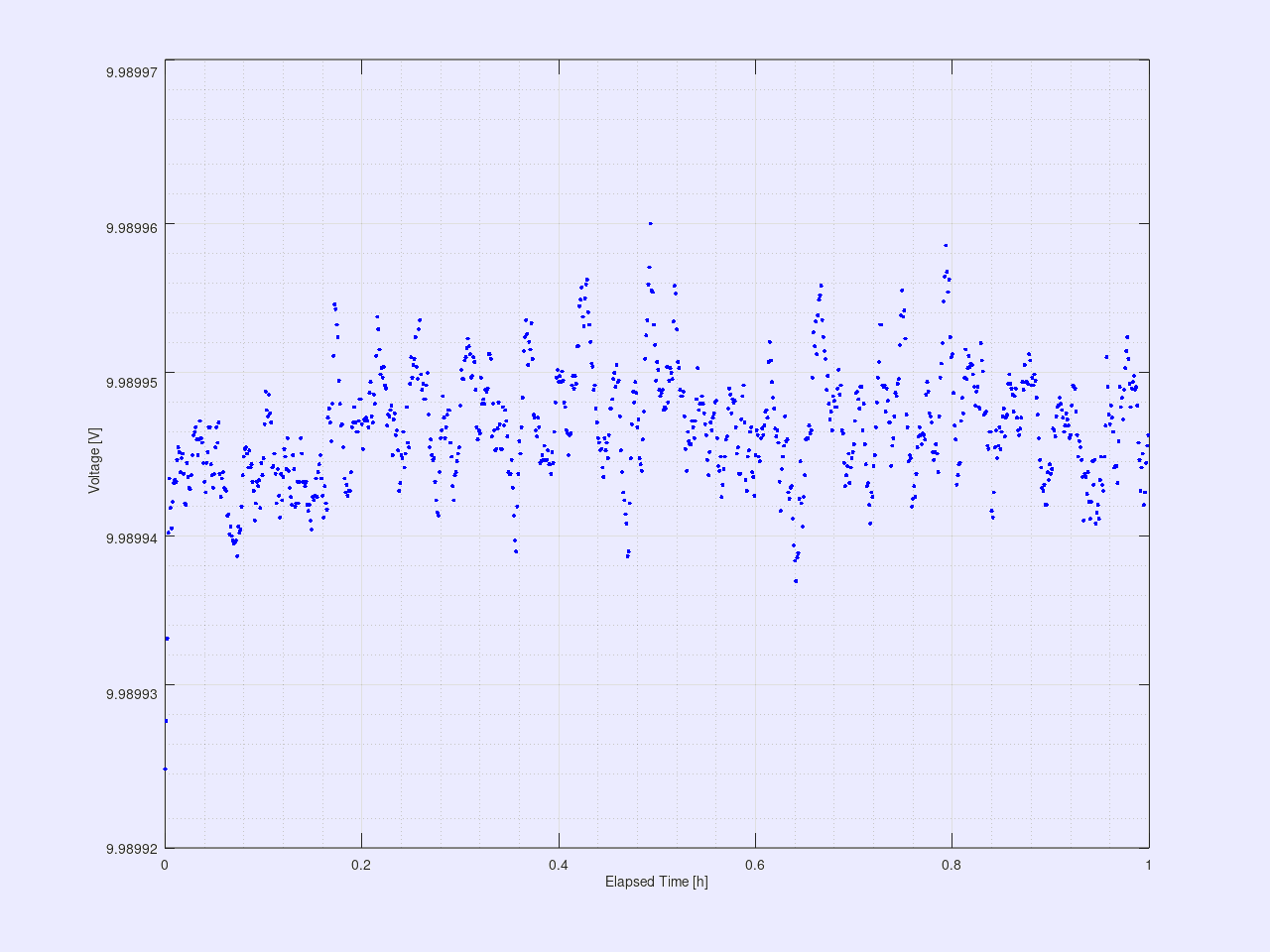Intro
The Prema 5017 and its brother 8017 with an integrated computer, are 7½-digit digital multimeters, based on Prema Semiconductors patented PREMA Multiple Ramp Technique (US-Patent 3765012) for the analog to digital conversion. From what is known it’s the same ASIC used in multiple different meters over the years, such as 5000 and 6000 series, with their top of the line 8½-digit digital multimeter Prema 6048. At least the labeling „Pr BK7“ on the ASIC is the same for all of the units.
Disclaimer
Redistribution and use of this article, parts of it or any images or files referenced in it, in source and/or binary forms, with or without modification, are permitted provided that the following conditions are met:
- Redistributions of article must retain the above copyright notice, this list of conditions, link to this page (/article/p5017_pimp/) and the following disclaimer.
- Redistributions of files in binary form must reproduce the above copyright notice, this list of conditions, link to this page (/article/p5017_pimp/), and the following disclaimer in the documentation and/or other materials provided with the distribution, for example Readme file.
All information posted here is hosted just for education purposes and provided AS IS. In no event shall the author, xDevs.com site, or Prema or any other 3rd party be liable for any special, direct, indirect, or consequential damages or any damages whatsoever resulting from loss of use, data or profits, whether in an action of contract, negligence or other tortuous action, arising out of or in connection with the use or performance of information published here.
If you willing to contribute or have interesting documentation to share regarding pressure measurements or metrology and electronics in general, you can do so by following these simple instructions.
Related manuals
Prema 5017 and 5017SC user’s manual
Prema 5017 schematics for A8 PCBA
Prema 5017 schematics for MC5 PCBA
Prema 5017 scanner module assembly diagram
Prema 5017 scanner module schematics
Prema 6047 and 6048 user’s manual
Differences between Prema 6047 and 6048 DMMs
The Prema 6047, the 7½-digit version, is in most aspects similar to the 6048 with two key differences [1]:
1. It uses the LM399 voltage reference compared to LTZ1000ACH in the Prema 6048
2. It’s missing the temperature measurement circuit on the logic board, again based on the BK7 ASIC and an LM335 temperature sensor (see Figure 1 and Figure 2)

Figure 1: Temperature sensing circuit in Prema 6048
In theory it is possible to convert a 6047 into a 6048, by replacing the voltage reference and by adding the temperature sensing circuit with the help of a cheap donor meter for the BK7 ASIC.

Figure 2: BK7 ASICs in Prema 6048 for voltage and temperature compensation measurements
Both, Prema 5017 and Prema 8017, are the latest models and fabricated using SMD components, before Prema finally left the test equipment sector. This was, referred to some insider info, due to the SMD crisis back in the 90’s, which lead to a production stop. When the crisis was over and the management decided to revive the test equipment line, most of the design engineers had already left the company. For the next few years Prema still offered service (firmware updates, hardware upgrades and repair) and calibration of their test equipment, before the last technician Mr. Wilfried Stricker retired.
Voltage reference modification
So the question arises, can a 5017 be improved in noise by replacing the LM399 with a better voltage reference? Fortunately, a pin compatible replacement showed up in 2022, the ADR1399. It features lower noise, in particular lower 1/f noise. Such a replacement only requires two minor changes in the circuit (see Figure 3), a different shunt resistor (R1 = 3.3 kΩ → R1 = 2.67 kΩ) and a different output filter (C112 = 100 nF → C112 = 1 µF + 5 Ω or 5.1 Ω) [2], [3].

Figure 3: Reference circuit with LM399 in Prema 5017
Reference, resistor and capacitor can be found in Figure 4 in the upper left corner and are shown in Figure 5 with R1 and C112 directly assembled underneath the reference and the reference mounted on the bottom of the A8 PCB.

Figure 4: PCB board component assembly drawing of the A8 board in Prema 5017
And actual reference photo:

Figure 5: LM399 reference in Prema 5017
The ADR1399 was pre-aged for 3000 h, R1 is in 0805 package and of the RQ73 series and the filter C112 with series resistor (2× 10 Ω) are in 0603 package to fit them to the 1206 footprint on the board (Figure 6).

Figure 6: Reference replaced by ADR1399
Prior and post changing the reference two different measurements were performed:
1. 10 V range with a short at the input, 2 s integration time and with the Avrg. Filter (20 dB) turned on, 2 hours
2. 10 V range with an LTZ-based 10 V voltage reference at the input, 4 s integration time and with the Avrg. Filter (20 dB) turned on, 1 hours
Baseline measurement prior reference replacement

Figure 7: Short measurement with LM399
Shorted input noise with LM399 is around ±18 µV or 36 µV peak to peak. This is about ±0.6 ppm relative to the base 30 VDC range.

Figure 8: 10V reference voltage measurement with LM399
Noise at 10V signal applied to 30 VDC range with LM399 is around ±2 ppm relative to the range.
Measurement post reference replacement

Figure 9: Short measurement with ADR1399
Shorted input noise with ADR1399 is around 39 µV peak to peak. Equals to very similar ±0.65 ppm relative to the base 30 VDC range.

Figure 10: 10V reference voltage measurement with ADR1399
Noise at 10V signal applied to 30 VDC range with ADR1399 is around ±2.1 ppm relative to the range.
Conclusion
Although the ASIC is the same as in the higher resolution Prema 6048 meter replacement of the LM399 reference to ADR1399 with lower voltage noise offered no visible improvement in the noise readings data.
The most likely explanation is the different implementation of the BK7 ASIC in Prema 5017 with its noise shaping circuit compared to 6048. Even an adjustment of P5 to a reading of 2.1 V at PD1 did improve nothing. So the performance of the meter is not limited by the reference, but the ADC implementation itself.
Projects like this are born from passion and a desire to share how things work. Education is the foundation of a healthy society - especially important in today's volatile world. xDevs began as a personal project notepad in Kherson, Ukraine back in 2008 and has grown with support of passionate readers just like you. There are no (and never will be) any ads, sponsors or shareholders behind xDevs.com, just a commitment to inspire and help learning. If you are in a position to help others like us, please consider supporting xDevs.com’s home-country Ukraine in its defense of freedom to speak, freedom to live in peace and freedom to choose their way. You can use official site to support Ukraine – United24 or Help99. Every cent counts.
Modified: May 30, 2022, 11:48 p.m.
